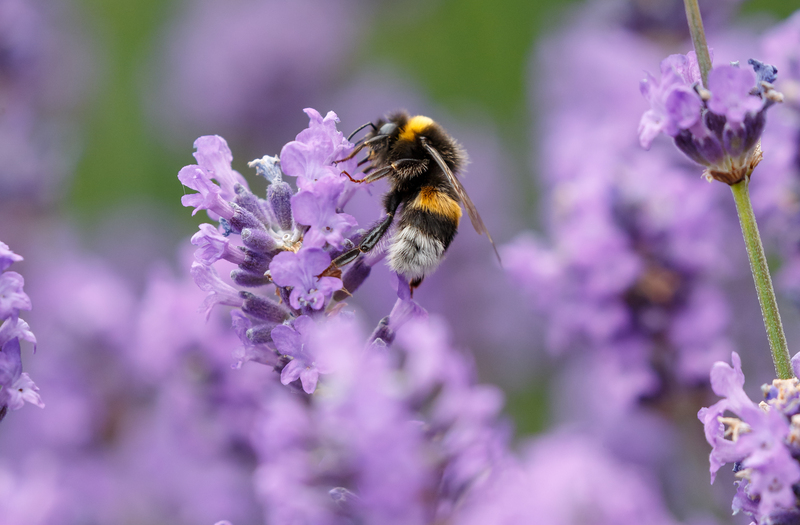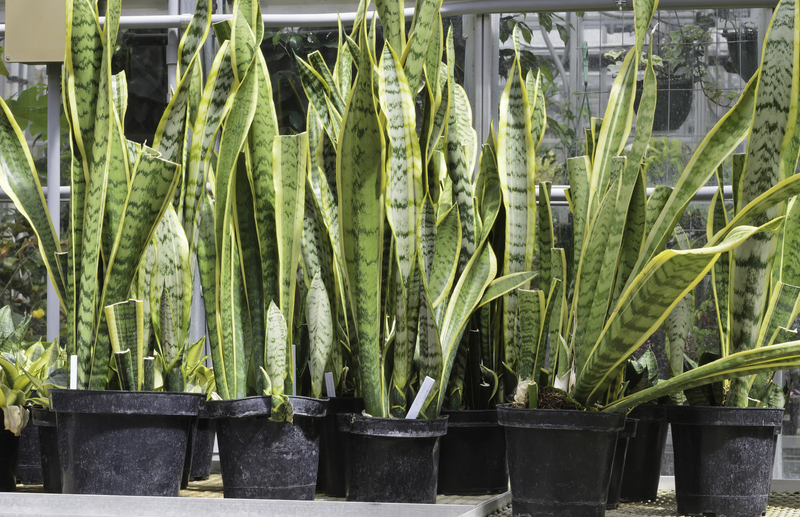Transform Your Yard with These Secrets to the Perfect Lawn
Are you dreaming of a lush, envy-worthy yard with deep emerald blades underfoot? The secret to the perfect lawn isn't out of reach! With expert tips, a little elbow grease, and some patience, you can turn your patch of green into a show-stopping landscape. This comprehensive guide uncovers the essential techniques and lawn care secrets you need to transform your yard and keep it looking verdant all year round.

Table of Contents
- Lawn Fundamentals: Setting the Foundation
- Soil Secrets: The Root of a Healthy Lawn
- Choosing the Right Grass for Your Perfect Lawn
- Mowing Mastery: Cutting Your Way to Perfection
- Watering Wisdom: Keep Your Lawn Hydrated
- Dealing with Weeds, Pests, and Yellow Spots
- Fertilization Formula: Feeding for a Greener Lawn
- Advanced Lawn Care Tips
- Seasonal Strategies for Year-Round Perfection
- Landscaping Enhancements for the Ultimate Yard
- Frequently Asked Questions About Lawn Perfection
Lawn Fundamentals: Setting the Foundation
Achieving a beautiful, resilient lawn begins with understanding the basics. Every well-maintained yard starts with the right groundwork. Before planting or reviving tired turf, take time to assess what you have and outline what you want to achieve.
Why Start with the Basics?
- Prevents future issues like disease and compaction
- Sets realistic expectations based on your climate, time, and resources
- Maximizes investment in time, money, and effort for optimal results
Pro Tip: Take clear before-and-after photos of your lawn to track your improvement journey!
Soil Secrets: The Root of a Healthy Lawn
Great lawns start below the surface. The health of your soil determines how well your grass absorbs nutrients, holds water, and develops strong roots.
How to Test Your Soil
Testing your soil is a vital first step to lawn success. You can purchase an at-home soil test or send a sample to your local cooperative extension.
- Test for pH (ideal range is 6.0 to 7.0 for most turfgrasses)
- Check nutrient levels (nitrogen, phosphorus, potassium)
- Assess organic matter content
Improving Your Soil
If your soil test shows deficiencies, here's how to address them:
- Raise low pH: Add lime to your soil
- Lower high pH: Apply sulfur or organic material
- Improve drainage: Incorporate organic compost, sand, or perlite
- Increase fertility: Mix in compost or well-rotted manure
Remember: Healthy soil equals healthy grass.
Choosing the Right Grass for Your Perfect Lawn
Not all grass types are suited for every region. The perfect lawn for someone in the cool north differs from one in the heat-prone south. Pick a turfgrass that matches your climate, shade levels, and intended use.
Popular Types of Grass for Lawns
- Kentucky Bluegrass: Classic, deep green for cool climates
- Bermuda Grass: Heat- and drought-tolerant for warm regions
- Zoysia Grass: Dense and traffic-resistant, great for kids and pets
- Fescue: Shade-tolerant and versatile
- Ryegrass: Fast-germinating for quick coverage
For shaded yards, consider mixing seed varieties for best coverage and resilience.
Mowing Mastery: Cutting Your Way to Perfection
Consistent, proper mowing is central to the perfect lawn. Mowing too short can stress your turf, while neglect leads to thatch, weeds, and disease.
The Golden Rules of Mowing
- Never cut more than one-third of the grass blade at once.
- Keep your mower blades sharp for a clean cut and less stress on the grass.
- Mow at the right height: Most lawns thrive at 2.5-3.5 inches.
- Change your mowing direction each week to avoid ruts.
- Leave clippings on the lawn to recycle nutrients (unless large clumps form).
Fun Fact: Taller grass shades the soil, reducing weed growth and keeping roots cooler and moist!
Watering Wisdom: Keep Your Lawn Hydrated
Proper watering is crucial for lawn transformation. Both overwatering and underwatering can lead to patchy, unhealthy turf.
Top Watering Tips
- Water early in the morning: Reduces evaporation and fungal diseases.
- Deep and infrequent watering encourages deep-root growth.
- Expect to water 1-1.5 inches per week during peak growing periods, including rainfall.
- Avoid evening irrigation to prevent moisture-related diseases.
Use a rain gauge or tuna can on your lawn to measure water application and adjust accordingly.
Dealing with Weeds, Pests, and Yellow Spots
No DIY lawn care guide is complete without a section on battling weeds, insects, and unsightly areas. A perfect yard is a healthy yard, and that means keeping invaders at bay.
Weed Control Secrets
- Thick, healthy lawns crowd out most weeds naturally.
- Spot-treat problem areas using organic or chemical herbicides as needed.
- Mulch or reseed bare patches to prevent weeds from gaining a foothold.
Pest Management Tips
Common lawn pests include grubs, chinch bugs, and sod webworms. Watch for irregular brown patches or birds frequently pecking at the turf.
- Encourage beneficial insects to naturally reduce pests.
- Use targeted insecticides only when necessary and per label directions.
- Regularly inspect the lawn to catch issues early.
Treating Yellow or Brown Spots
Discoloration is often caused by pet urine, fungal disease, or other stress. Remedy by:
- Watering deeply to flush salts (after pet spotting)
- Aerating soil to relieve compaction
- Applying fungicides if disease is confirmed
- Overseeding and fertilizing for recovery
Fertilization Formula: Feeding for a Greener Lawn
Fertilizer provides the essential nutrients for lush, vibrant grass growth. However, over-fertilization can harm the environment and damage roots--so balance is key.
Choosing the Right Fertilizer
- Slow-release blends provide long-term feeding and reduce burn risk.
- Match fertilizer to your soil's nutrient needs from your soil test.
- Pick seasonal formulas (Spring, Summer, Fall blends optimize timing).
How to Fertilize Correctly
- Fertilize in early spring and late fall for cool-season grasses.
- For warm-season grasses, fertilize in late spring and summer.
- Water after fertilizing to help nutrients reach roots.
- Always follow package instructions to avoid overfeeding.
Organic alternatives such as compost tea or fish emulsion are excellent for eco-friendly lawns.
Advanced Lawn Care Tips
Aeration: Give Your Lawn Room to Breathe
Overseeding: Fill Gaps for a Denser Lawn
Overseeding introduces fresh grass seed, thickening your turf and repairing bare spots. Prime time is early fall (cool-season) or late spring (warm-season grasses).
Dethatching: Remove Excess Debris
A thin layer of thatch insulates roots, but too much thatch blocks water and nutrients. Remove excess thatch annually or as needed using a dethatching rake.
Seasonal Strategies for Year-Round Perfection
The secrets to a perfect lawn adapt as the seasons change. Here's what your yard needs throughout the year:
Spring
- Rake up debris and dead leaves
- Apply pre-emergent weed control
- Fertilize and seed new areas
Summer
- Raise mower deck to shade roots
- Water deeply in the morning
- Monitor and treat for pests
Autumn
- Aerate and overseed
- Dethatch if needed
- Apply fall fertilizer
Winter
- Avoid walking on frozen grass to prevent damage
- Service tools and prepare equipment for spring
Landscaping Enhancements for the Ultimate Yard
A stunning lawn is the perfect backdrop for creative landscaping. Add personal touches and extra curb appeal with these ideas:
- Define lawn edges with decorative curbing or stone borders
- Add mulched flower beds for color variety
- Plant native shrubs or trees that complement your turf
- Install pathways and lighting for safe, stylish navigation
- Add a water feature for tranquility and value
Strategically placed elements can enhance the beauty of your manicured lawn, making your outdoor space a true retreat.
Frequently Asked Questions About Lawn Perfection
How often should I mow my lawn?
Typically, mow once a week, but let growth rate and season dictate schedule. Avoid cutting more than one-third of the blade at a time.
What is the best time to fertilize my yard?
Fertilize in early spring and late fall (for cool-season grasses), or late spring and summer (for warm-season types). Adjust based on your specific grass and climate.
Should I bag my clippings?
Normally, leave clippings on your lawn--they provide natural fertilizer. Bag clippings only if they are wet, too long, or diseased.
How can I green up my lawn fast?
Use a quick-release nitrogen fertilizer and water deeply. Avoid overfeeding or shortcuts, which can stress your grass.
Is it better to seed or sod?
Sod delivers instant results but is pricier. Seeding is cost-effective and offers more grass variety, but takes longer to establish.

Conclusion: Your Perfect Lawn Awaits!
The transformation of your yard into a showstopper is possible by mastering soil health, picking the right grass, mowing and watering correctly, and following seasonal and advanced care tips. With consistent attention and a bit of know-how, you'll unlock the secrets to the perfect lawn--and enjoy a beautiful, vibrant yard to cherish for years!
Ready to get started? Roll up your sleeves and watch your lawn transform before your eyes! For more exclusive tips, make sure to bookmark this article and revisit each season for tailored advice.